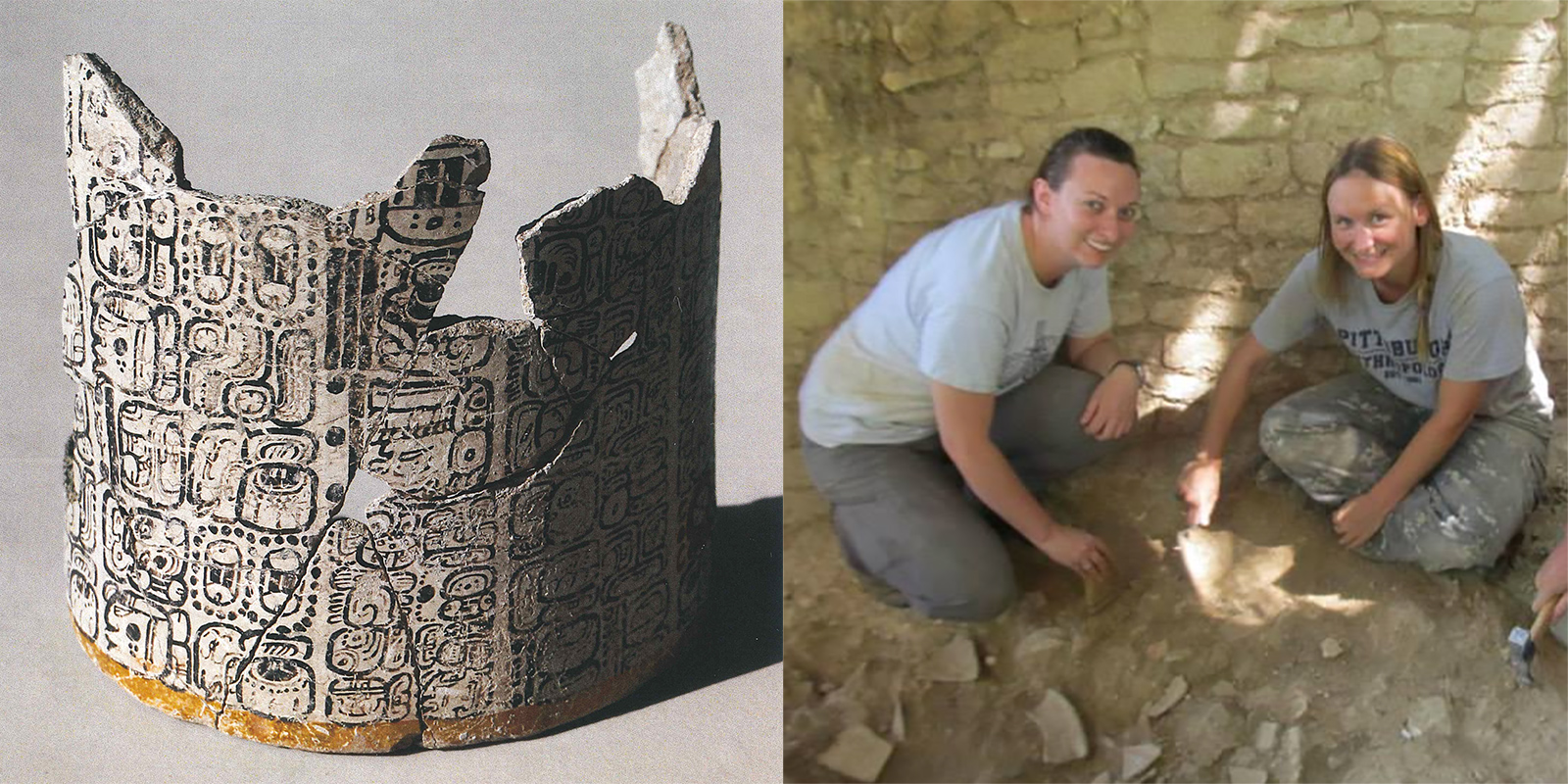Baylor prof’s discovery of hieroglyphic vase offers clues about the mysterious Maya collapse

The discovery of an ancient vase — found during an excavation led by a Baylor professor — is offering new clues into the mysterious breakdown of ancient Maya civilization.
Dr. Julie Hoggarth, an assistant professor of anthropology at Baylor since 2015, found the first fragment of the vase at the site of an ancient royal palace in Belize. The artifact dates to about 800 AD and features hieroglyphic text that tells of political upheaval and warfare during a time when the Maya civilization had already begun to collapse.
“The unique aspect of the Komkom Vase is that it was written during this period of instability,” Hoggarth told Newsweek, “and gives a perspective by the Maya themselves of the escalation of warfare during this time.”
The vase’s size — about nine inches — is also unusual. After painstakingly piecing the fragments back together, the team believes it has more than 60% of the original vase; at its full length, it would have included more than 200 hieroglyphic blocks, making it the longest Pre-Columbian text discovered in Belize and among the top 10 longest Classic Period (A.D. 250-1000) texts ever discovered in the Maya area.
Hoggarth was awarded a National Science Foundation grant in 2015 to conduct archaeological excavations and radiocarbon dating of sites in western Belize. She wants to determine whether the abandonment of this site and others mentioned in the hieroglyphics might be related to droughts and the breakdown of the political systems of Maya civilization, known for its sophisticated writing system, art, architecture, math, accurate calendars and astronomy.
Her team’s findings — complete with photos, illustrations, and detailed translation and analysis of the hieroglyphs and text — have been published in a new book, A Reading of the Komkom Vase Discovered at Baking Pot, Belize.
Sic ’em, Dr. Hoggarth!

